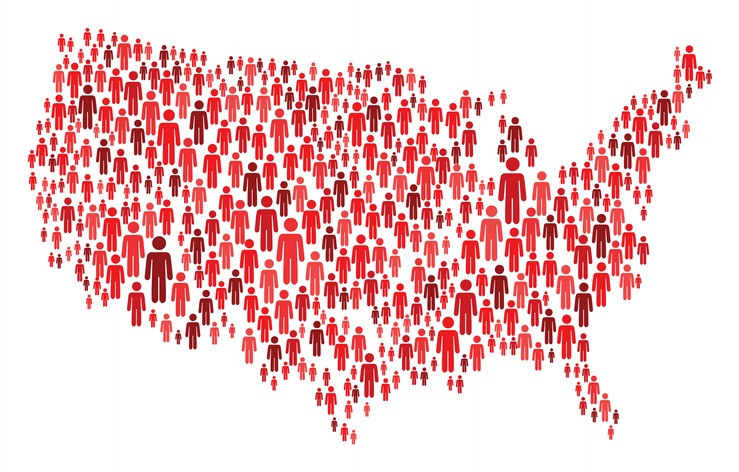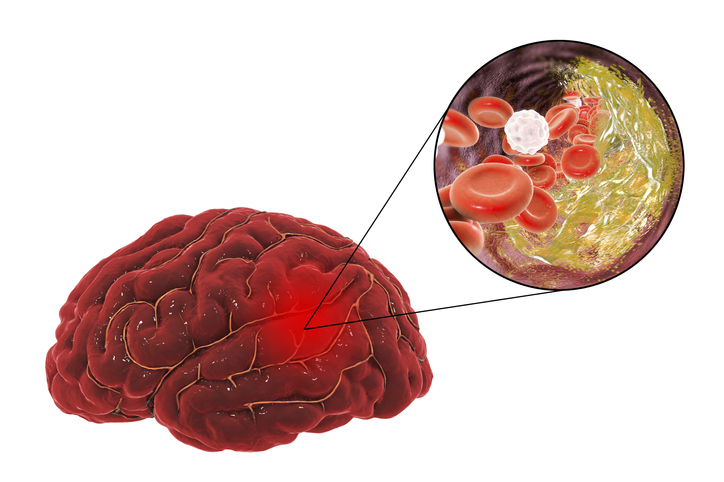Be Proactive About Preventing One Of America’s Leading Causes of Death -- Hemorrhagic Stroke

By Joy Stephenson-Laws, J.D., Founder
I was really sad to hear about the recent passing of country music legend Charlie Daniels. He had a career that spanned decades, won several awards and was inducted into the Country Music Hall of Fame. You might know him most for his 1979 hit “The Devil Went Down to Georgia.”
Daniels was very vocal about his opinion on politics, as can be seen here in a letter he wrote to former president Barack Obama. He also received a lot of backlash for a tweet he posted back in 2016 where he said, “There are some kids in college who should spend a year picking cotton.”
Many people accused him of being racist. He defended his comment by saying that he had personal experience picking cotton and that manual labor taught him a lot about life.
At the end of the day, despite our race or beliefs, we may be all susceptible to a myriad of health issues which can threaten our lives. A stroke is one of them.
Daniels died of a hemorrhagic stroke at 83-years-old.

Ischemic, transient ischemic attack and hemorrhagic.
Ischemic stroke occurs from a blockage in a blood vessel that supplies blood to the brain. According to the American Heart Association, atherosclerosis (plaque build up in the artery walls) is the underlying cause of ischemic stroke. The AHA also reports that this type of stroke accounts for 87 percent of stroke cases.
A transient ischemic attack (TIA) is sometimes referred to as a “mini stroke." It is similar to an ischemic stroke, but it is usually caused by a temporary clot and may not cause permanent damage. It is very important to know that a TIA is a warning of a future stroke.
“More than a third of people who have a TIA and don’t get treatment have a major stroke within 1 year. As many as 10% to 15% of people will have a major stroke within 3 months of a TIA,” reports the Centers for Disease Control and Prevention (CDC).
A hemorrhagic stroke occurs due to a weakened blood vessel that ruptures and bleeds into the surrounding brain. This blood collects and compresses the brain tissue. This weakened blood vessel is usually caused by an aneurysm or an arteriovenous malformation (a cluster of abnormally formed blood vessels).
“Most strokes are caused by a clot that cuts off blood flow to the brain. But about 13 percent are caused by a weakened blood vessel that ruptures and bleeds into the brain. These so-called hemorrhagic strokes are the deadliest and least treatable type,” according to Medical Xpress.
The CDC reports that stroke is the fifth leading cause of death in the United States and is a major cause of serious disability for adults. Strokes are also not “an old person’s condition.”
Actor Luke Perry died of a stroke at just 52-years-old, and film director John Singleton died of a stroke at the age of 51.
The good news is that according to the CDC, “Stroke is preventable. You may be able to prevent stroke or lower your chances of having a stroke.”
As mentioned earlier, atherosclerosis (when plaque builds up inside of the arteries) is a major cause of stroke. There are certain things that can damage the inner layers of the arteries and lead to atherosclerosis.
Per the National Heart, Lung and Blood Institute, some of these things include:
- Smoking
- High amounts of certain fats and cholesterol in the blood
- High blood pressure (hypertension)
- High amounts of sugar in the blood due to insulin resistance or diabetes
- Obesity
Charlie Daniels battled many health problems.
Reportedly, in 2001 Charlie was diagnosed with prostate cancer. He also had another stroke (more mild) prior to the stroke that took his life as well as atrial fibrillation (a type of irregular heart rate). He had a heart pacemaker implanted in 2013 to help combat his heart issues. Daniels also shared that he had a four pack a day habit of smoking cigarettes but that he quit smoking cigarettes in 1968.
One way to be proactive about preventing a stroke is by living a healthy lifestyle.
If you are a regular reader of pH Labs blogs, you know what this means:
- Eat a nutrient-rich, anti-inflammatory diet. Avoid a pro-inflammatory diet full of processed foods.
- If you are a smoker, quit right now!
- Exercise regularly
- If you drink alcohol, drink in moderation. Moderation may be less than you think. Click here to find out how much is too much.
- Get good quality sleep
- Manage your stress levels
- Monitor your blood pressure
- Get routine physicals to screen for health issues such as diabetes and heart disease
And for seven things you can do from Harvard Health in order to prevent stroke, read here.
Finally, people who are not nutritionally balanced tend to have more heart problems and difficulty maintaining a healthy weight. Take a comprehensive nutrient test in order to identify any nutrient imbalances or deficiencies that you may have. If the test determines you are not nutritionally balanced, a competent healthcare professional can work with you on making the necessary dietary changes and recommend quality supplements if necessary.
Let’s enjoy our healthiest lives!
The pH professional health care team includes recognized experts from a variety of health care and related disciplines, including physicians, attorneys, nutritionists, nurses and certified fitness instructors. This team also includes the members of the pH Medical Advisory Board, which constantly monitors all pH programs, products and services. To learn more about the pH Medical Advisory Board, click here.







